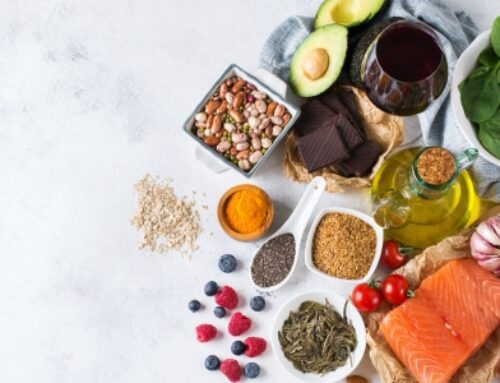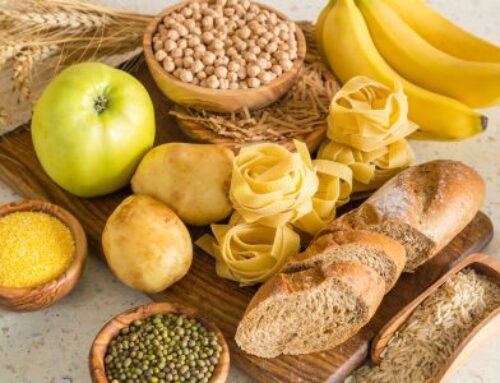
I talk about fibre A LOT in my day-to-day work and I can honestly say that it’s the most underrated nutrient in our food. Diets and online programs can give so much focus to arguing over carbohydrates, proteins and fats, but fibre is where we should be putting our efforts .
Why add fibre?
Fibre is the indigestible part of the plant, which means that it goes in one end of your body and out the other. If it’s moving right through, you might think ‘What’s the point?’ Well my friend, check out all the cool things that fibre can do:
- It’s usually found in whole foods so a high fibre diet often means a whole food diet. Fibre rich whole foods includes fruits, vegetables, whole grains, nuts and seeds, which are full of micronutrients (vitamins & minerals) that help support your immune system and brain health.
- Fibre makes your body work a little harder to absorb carbohydrate, which means high fibre meals have a lower Glycemic Index (GI).
- It can bind to saturated fat within your gut and carry those fats our in your, which helps to lower your cholesterol.
- It feeds your gut bacteria, which we now know can also influence your immune system, your brain health and even your mood.
- And of course, it can help to bulk up your stool so that you can have a BEEP (Big Evacuating Enjoyable Poo) everyday.
HOW COOL IS THAT!
While you may be thinking ‘I eat lots of fibre’, according to the research only 28% of Australians are meeting the fibre recommendations. That’s less than 3 in 10 people.
So, based on the impacts above, one of the best things we can do for our health and for the health of our community is smuggle a little more fibre into your day. Here are some easy ways to do it:
Breakfast
- Swap to a high fibre breakfast cereal like Sultana Bran, All Bran, Weetbix etc.
- Add some high fibre breakfast cereal to your favourite cereal like mixing Milo cereal will Guardian
- Add 1-2 tablespoons of whole nuts or seeds onto your cereal
- Sprinkle some slices almonds on your jam toast.
- Add some slices apple or banana to your peanut butter toast
- Slice some tomato or 2 tsp of pepitas on to your smashed avo
- Add some chia seeds to your smoothie
Snacks
- Try some vegetable snacks. Check out these one’s from The Healthy Eating Hub (our sister company)
- Let a ½ cup frozen peas or corn thaw and eat as a snack
- Make some whole meal muffins or biscuits
- Spinach and pumpkin muffin
- Blood orange and poppy seed muffins
- Carrot and walnut muffins
- Package up some trail mixes for the week
- Grab some roasted chickpeas or broad beans (you can even
- Have some fruit with your evening chocolate
- Pack yourself a small vegetable soup
Lunch
- Add some extra frozen veg with your leftover lunch
- Swap to a wholemeal or high fibre white bread
- Add a wholegrain to your salad like:
- Instant cup of brown rices
- Wholemeal couscous
- Pearl barley
- Quinoa
- Put a handful of baby spinach in with your leftover casserole.
- Finish your lunch with a piece of fruit
- Use some of our supermarket meals
- Order a side of veggies with your takeaway lunch
- Add extra salad to your takeaway sandwich.
Dinner
- ADD MORE VEG – seriously, however much veg the recipe calls for… add more!
- Dish cup your meal onto a 1-2cup of baby spinach.
- Use veggie soups in the cooler weather
- Roast veggie chips in with your oven baked chips
- Grill some veg on the toasted sandwich press
- Have your takeaway with some pre-chopped salad or frozen vegetables
- Mix Cauliflower rice in with your normal rice
- Sprinkle some toasted nuts or seeds on your one pot dish
- Blend vegetables into sauces
- Cauliflower or pumpkin in a creamy sauce
- Spinach/ asparagus/ broccoli into a pesto
- Carrots or capsicum into a tomato sauce
Fibre supplements
A quick note on fibre supplements which include products like Metamucil and Benefibre. While these sorts of supplements can be a helpful tool to meet your fibre needs, particularly if you struggle to eat more food, one of the benefits of fibre is that is usually comes with whole foods that are rich in other vitamins, minerals and phytochemicals (plant chemicals) which support your body to function well. For long term improvements in health and wellbeing, I would generally recommend starting with your whole food sources of fibre and figuring out how to make these foods part of your consistent habits.
If you’re experiencing gut troubles, check out our guide to gut health, it’s a great place to start getting to the bottom of it all!



